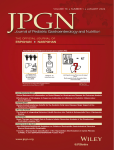Immunological and Nutritional Composition of Human Milk in Relation to Prematurity and Mothers' Parity During the First 2 Weeks of Lactation
ABSTRACT
Background:
To investigate the effect of prematurity and parity on the dynamics of the major immunologic and nutritional proteins of human milk over the first 2 weeks of lactation.
Methods:
Microparticle-enhanced nephelometric immunoassays were developed for the quantification of α-lactalbumin, β-casein, serum albumin, lactoferrin, and lysozyme in human milk. These components, immunoglobulin A, and total proteins were assayed in 368 individual samples collected from 74 mothers.
Results:
The dynamics of the major immunologic and nutritional proteins in early lactation presented similar patterns in preterm and term human milks. In comparison with term milk, preterm milk was globally characterized by higher concentrations of immune proteins and lower concentrations of nutritive proteins. These differences were increased by the degree of prematurity, which, however, influenced the absolute and relative protein concentrations differently, depending on the stage of lactation. The protein composition of term milk was similar, whatever the mother's parity. Conversely, the influence of prematurity on the levels of milk proteins during the first days of lactation was even greater in primiparous mothers.
Conclusions:
This precise description of the composition of preterm and term milk, regarding the main nutritional and immunologic proteins, confirms the influence of both prematurity and parity on milk components and demonstrates the combined effect of these two conditions.




